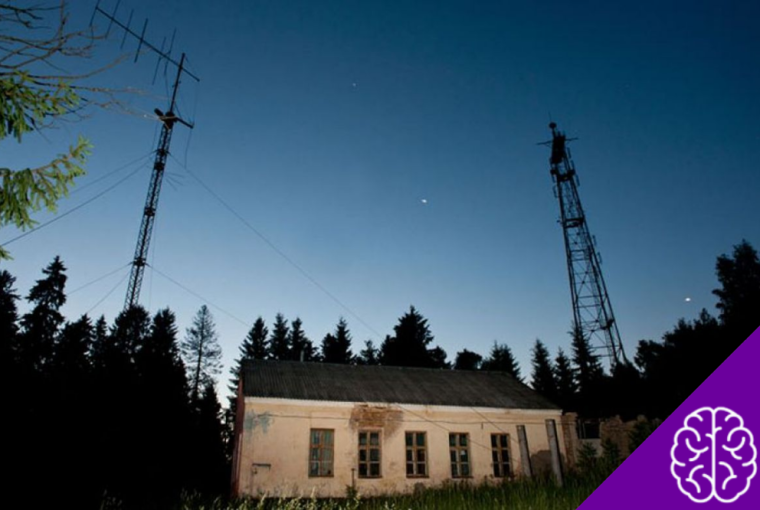There’s a strange radio station occupying the 4625 kHz frequency. Known as UVB-76, or “The Buzzer,” its enigmatic broadcasts have puzzled amateur radio enthusiasts, conspiracy theorists, and scientists alike for over four decades.
This mysterious station continuously emits a monotonous buzzing sound, occasionally interrupted by cryptic spoken messages in Russian.
What is UVB-76? Is it a relic of the Cold War, a coded military communication system, or something even more secretive? Today, we’ll explore what we know about “The Buzzer,” the theories surrounding its existence, and why it continues to broadcast in an age of advanced digital communications.
What is UVB-76?
A Continuous Broadcast Since 1982
UVB-76 first caught the attention of listeners in 1982. Since then, it has been transmitting a steady buzzing sound interspersed with occasional voice messages.
Despite the fall of the Soviet Union and technological advancements, the station persists to this day, with no official acknowledgment from the Russian government about its purpose.
Its resilience across decades and different regimes has added to the mystique surrounding the station.
The Broadcast Patterns
UVB-76 emits a continuous buzzing noise, which can be described as repetitive and mechanical, akin to the hum of a fax machine.
The monotony is occasionally broken by brief voice messages in Russian, often consisting of seemingly random words, names, and numbers. For example, on Christmas Day in 1997, the broadcast announced:
“UVB 76. 180 08 Bromal 74279914. Boris, Roman, Olga, Mikhail, Anna, Larissa. 7 4 2 7 9 9 1 4.”
These messages are often cryptic and do not follow any discernible pattern, which has resulted in widespread speculation about their meaning.
A Base for Mysteries
Location Confusion
Originally, UVB-76 transmissions were traced to a military base near Povarovo, a small town outside Moscow. But after being discovered in 2010, the station changed locations.
Listeners using triangulation methods have since proposed at least three current sites, though none have been confirmed as the actual source of the broadcasts.
Theories Behind UVB-76
The true purpose of UVB-76 remains a mystery. However, enthusiasts and theorists have proposed several plausible (and implausible) explanations.
Theory 1: Military Operations
One of the most widely accepted explanations is that UVB-76 is a tool for the Russian military. This theory is supported by the fact that the station was once broadcast from a confirmed military communication facility near Povarovo.
Proponents believe that the broadcasts might contain encrypted orders or signals, possibly for communication with field agents or mobile forces.
Further, some say that the buzzing might act as a sort of “heartbeat signal,” indicating that the station is operational. If the buzzing were to stop, it could trigger certain operations or procedures.
Theory 2: Spy Communications
Others suspect that UVB-76 serves as a channel for transmitting one-time pad codes to Russian spies stationed in foreign countries.
One-time pad codes are considered highly secure for encryption, as they are virtually unbreakable if used correctly.
The sequences of numbers and names broadcast on UVB-76 could fit this model, serving as unique cipher keys.
Theory 3: Missile Launch Controls
More outlandishly, it has been proposed that UVB-76 connects to a “Dead Hand” system, a rumored automated nuclear retaliation program designed during the Cold War.
If true, the station could be broadcasting signals tied to missile launch systems, ensuring that specific conditions or commands are met before deployment.
Theory 4: Scientific Use
Finally, there’s an “official” explanation, albeit brief and understated. Research from the Borok Geophysical Observatory, which falls under the control of the Russian government, claims that the UVB-76 signal is actually used to measure changes in the Earth’s ionosphere.
However, the lack of detailed information and the mysterious voice interruptions make this unlikely to be the complete story.
Why Does UVB-76 Still Broadcast?
One of the most intriguing questions about UVB-76 is why it persists in the era of advanced digital communication.
Surely, a state actor like Russia would have more sophisticated tools for secure communication than an easily intercepted shortwave radio signal?
Some suggest that UVB-76 endures because it operates as a form of cyber or psychological warfare. Others speculate it may simply continue as a relic, its original purpose long obsolete.
Or perhaps, keeping the station active is a form of deliberate obfuscation to maintain its mystique and distract from other intelligence activities.
The Cult Following of UVB-76
Despite its lack of mainstream acknowledgment, UVB-76 has found an audience among amateur radio enthusiasts and conspiracy theorists.
Websites such as UVB-76.net allow listeners to monitor its signal in real time, and Reddit forums host lively discussions on the latest observed anomalies.
Over the years, the station’s bizarre messages and reliability have turned it into a cultural phenomenon. Its mystery captures human curiosity, offering thrilling possibilities of espionage and Cold War enigmas, even in the 21st century.
What’s Next for the Buzzer?
We may never receive clear answers about UVB-76, especially since its operators remain silent. Its purpose, while endlessly debated, continues to be one of the most enduring and cryptic enigmas of modern radio communications.
If you’re intrigued by the idea of decoding UVB-76’s broadcasts yourself, accessible websites, forums, and shortwave radios offer all the tools you need to join this modern mystery!


